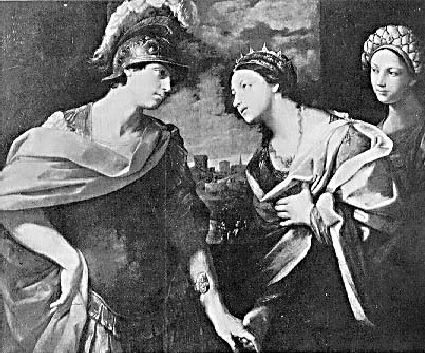 |
 |
 Dido and Aeneas, Reni  Guido Reni (1575-1640), Dido and Aeneas - Kassel Staatliche Kunstsammlung Guido Reni Italian painter of popular religious works and critically acclaimed mythological scenes. He was born in Bologna and began to study painting at the age of nine, and about 1595 he became a pupil of the Carracci family of Bolognese painters. Between 1600 and 1614 Reni worked mainly in Rome, where he painted the Crucifixion of Saint Peter (1601-03, Vatican). He worked (1608-09) on frescoes in San Gregorio Magno al Cielo, Rome, and in 1613 he executed his most renowned work, the ceiling fresco Phoebus and the Hours, Preceded by Aurora, in the Rospigliosi Palace, Rome. Reni was strongly influenced by classical art, and the realistic style of his early period contrasted with the exuberant baroque style of his contemporaries. During his final years, he returned to Bologna, where he established his own academy. He abandoned realism for a softer, more sentimental style. |








